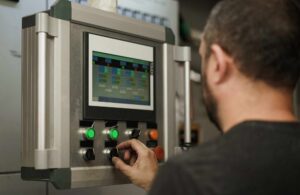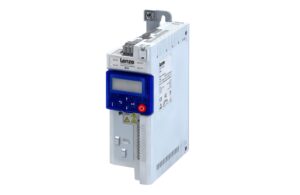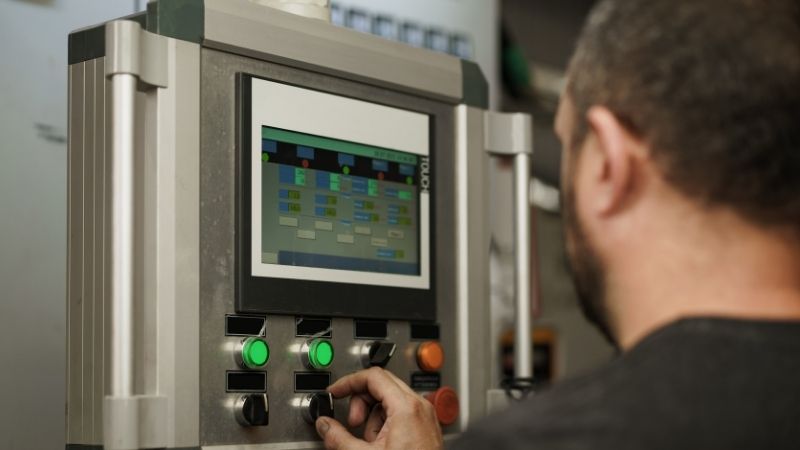Как ПЛК управляет электромагнитным клапаном?
К счастью, использование программируемого логического контроллера (ПЛК) может оптимизировать этот процесс, обеспечивая точность и эффективность.
Как инженер в Kwoco, я своими глазами видел, как ПЛК упрощают задачи автоматизации. Подключив ПЛК к соленоидному клапану, мы можем автоматизировать операции, которые в противном случае потребовали бы ручного вмешательства. Это не только экономит время, но и повышает безопасность в потенциально опасных средах.
Оглавление
Что такое электромагнитный клапан?
Соленоидный клапан — это электромеханическое устройство, которое управляет потоком жидкостей и газов. Он состоит из двух основных частей: соленоидной катушки и корпуса клапана. В зависимости от конструкции соленоидный клапан может быть нормально открытым (НО) или нормально закрытым (НЗ). Это означает, что он либо пропускает, либо блокирует поток жидкости, не требуя постоянной ручной регулировки.
Когда соленоидная катушка находится под напряжением, она создает магнитное поле, которое перемещает плунжер внутри корпуса клапана. Это действие либо открывает, либо закрывает клапан, управляя потоком среды. Понимание этого механизма необходимо любому инженеру, работающему в системах управления потоками.
Какие факторы следует учитывать при выборе электромагнитного клапана?
Когда дело доходит до выбора соленоидного клапана, вы можете почувствовать себя подавленным от доступных вариантов. Выбор правильного клапана имеет решающее значение, поскольку неправильный выбор может привести к неэффективности эксплуатации и увеличению расходов. Понимание того, на что следует обращать внимание, может упростить этот процесс.
Проще говоря, вот ключевые факторы, которые следует учитывать:
- Тип электромагнитного клапана: Подумайте, нужен ли вам двухходовой, трехходовой или четырехходовой клапан. Это зависит от вашего применения и желаемого управления потоком.
- Рабочее давление и температура: Убедитесь, что клапан может выдерживать давление и температуру вашей системы. Превышение этих пределов может привести к отказу клапана или небезопасной работе.
- Совместимость с носителями: Убедитесь, что материал клапана совместим с жидкостями или газами, которые он будет контролировать. Важно избегать химических реакций, которые могут повредить клапан.
- Требования к напряжению: Определите, нужен ли вам клапан переменного или постоянного тока, и проверьте требуемое напряжение для работы. Это может повлиять на установку и интеграцию с вашими существующими системами.
- Время ответа: Для приложений, требующих быстрого срабатывания, учитывайте время отклика клапана. Это может повлиять на общую эффективность вашей системы.
- Размер и скорость потока: Размер клапана должен соответствовать вашей системе трубопроводов, а его расход должен соответствовать требованиям вашего приложения. Клапаны неправильного размера могут снизить эффективность или увеличить износ.
- Качество и надежность: Выбирайте клапаны от известных производителей, известных своим качеством. Качество влияет на стоимость обслуживания и эксплуатационную надежность.
- Стоимость против ценности: Хотя бюджетные ограничения важны, рассмотрите общую ценность, которую клапан предлагает с точки зрения производительности и долговечности. Инвестиции в качественные продукты могут привести к долгосрочной экономии.
Учитывая эти факторы, вы сможете принять обоснованное решение, которое повысит успешность вашего проекта.
Как ПЛК работают с электромагнитными клапанами
Электромагнитные клапаны жизненно важны практически в каждой системе управления потоками. Они автоматизируют поток жидкостей и газов, экономя время и снижая риск человеческой ошибки. Для точного управления разумным выбором будет использование ПЛК для управления электромагнитным клапаном.
Когда ПЛК выдает напряжение, он активирует соленоид, позволяя жидкости течь. И наоборот, отключение напряжения деактивирует соленоид, останавливая поток. Этот простой, но эффективный механизм управления является ключевым в различных промышленных приложениях.
Понимание того, как подключить ПЛК к соленоидному клапану, может значительно повысить производительность вашей системы. Выходной модуль ПЛК подключается напрямую к катушке соленоидного клапана. Когда соответствующая выходная точка получает напряжение, катушка соленоида активируется, включая клапан.
Для установок, требующих больших токов, таких как соленоиды 24 В, используйте внешние источники питания и промежуточные реле для безопасного управления нагрузкой. Это гарантирует, что ваш ПЛК останется защищенным и работоспособным даже во время коротких замыканий.
Обеспечьте свои проекты новыми, оригинальными ПЛК Omron, Mitsubishi, Schneider — в наличии, готовы прямо сейчас!
Заключение
Управление соленоидным клапаном с помощью ПЛК — эффективный способ автоматизации систем управления потоками. Понимая принципы работы, вы можете улучшить результаты своего проекта и обеспечить безопасность и надежность.
Ищете новые оригинальные ПЛК для своих проектов? В Kwoco мы поставляем новейшие ПЛК от ведущих брендов, таких как Омрон, Мицубиси, и Шнайдер. Покупайте с уверенностью — быстрая доставка, гарантированное качество! Купить сейчас.
Связаться с нами
Просто заполните свое имя, адрес электронной почты и краткое описание вашего запроса в этой форме. Мы свяжемся с вами в течение 24 часов.
Категория продукта
Горячие продажи товаров
Эти темы также могут быть вам интересны

Каковы примеры входов и выходов ПЛК?
Каковы примеры входов и выходов ПЛК? В промышленной автоматизации системы ПЛК (программируемый логический контроллер) являются мозгом

Как ПЛК управляет электромагнитным клапаном?
Когда дело доходит до управления потоком жидкости, соленоидные клапаны являются важнейшим компонентом. Однако многие инженеры испытывают трудности с эффективным использованием этих клапанов в своих проектах. Если вы разочарованы управлением соленоидными клапанами, вы не одиноки.

Коды ошибок привода Lenze: как подключить, эксплуатировать и устранить распространенные неисправности
В этой статье представлено всеобъемлющее руководство по пониманию, устранению неисправностей и устранению распространенных кодов неисправностей в приводах Lenze. Если вы работаете в промышленной автоматизации, особенно на заводах по производству машин и оборудования или производственных предприятиях, это руководство станет бесценным ресурсом. Мы углубляемся в тонкости кодов ошибок приводов Lenze, предлагая практические решения и экспертные знания для повышения эффективности вашей работы и минимизации простоев. Понимание этих кодов ошибок необходимо для поддержания надежности и долговечности вашего оборудования.





